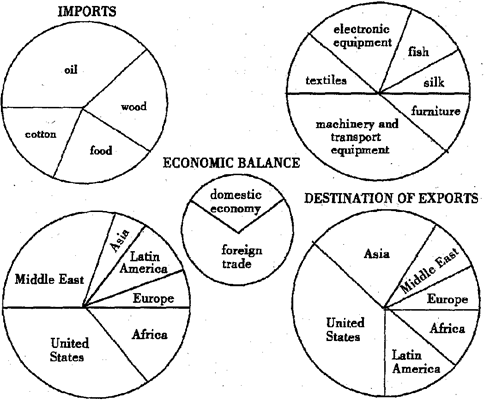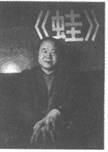
科目: 來源:不詳 題型:閱讀理解
| A.there is a big income gap between female and male college graduates in America. |
| B.college graduates find it hard to find an ideal job after graduation in America. |
| C.research shows that American government should take measures to ensure income equality for college graduates |
| D.college degrees are losing value in America. |
| A.The whole nation has enjoyed a big income growth with the growth of productivity. |
| B.Much of the total income in America has been gained by a few very rich people. |
| C.A small part of people in America have income increase. |
| D.Upper class Americans contribute most to productivity growth. |
| A.being gradually destroyed by wind or rain |
| B.gradually reducing power |
| C.gradually disappearing |
| D.gradually not suitable |
| A.female college graduates have higher income than male ones. |
| B.female college graduates have benefited from some governmental measures to ensure their income growth. |
| C.income tax can grantee income equality. |
| D.new measures and policies have been taken to promote income equality. |
| A.lower college degree of college graduates |
| B.lack of proper governmental policies |
| C.gender discrimination |
| D.underdevelopment of economy and productivity. |
查看答案和解析>>
科目: 來源:不詳 題型:閱讀理解
| A.introduce the history of bowing in Japan |
| B.describe the purposes of bowing in Japan |
| C.describe different ways of bowing in Japan |
| D.introduce the Japanese custom of bowing |
| A.one kind of bow has many similar functions |
| B.people can express different feelings by bowing |
| C.people bow to express their feelings |
| D.the more times you bow, the more respect you receive |
| A.by bowing | B.by shaking hands |
| C.by kissing each other | D.by touching |

查看答案和解析>>
科目: 來源:不詳 題型:閱讀理解

| A.Panland imports food and exports raw materials. |
| B.Panland imports manufactured goods and exports food. |
| C.Panland imports manufactured goods and exports raw materials. |
| D.Panland imports raw materials and exports manufactured goods. |
| A.Asia. | B.Africa. | C.Middle East. | D.United States. |
| A.farmers | B.fishing people | C.unskilled laborers | D.skilled factory workers |
查看答案和解析>>
科目: 來源:不詳 題型:完形填空

| 小題1: |
|
| 小題2: |
|
| 小題3: |
|
| 小題4: |
|
| 小題5: |
|
| 小題6: |
|
| 小題7: |
|
| 小題8: |
|
| 小題9: |
|
| 小題10: |
|
| 小題11: |
|
| 小題12: |
|
| 小題13: |
|
| 小題14: |
|
| 小題15: |
|
| 小題16: |
|
| 小題17: |
|
| 小題18: |
|
| 小題19: |
|
| 小題20: |
|
查看答案和解析>>
科目: 來源:不詳 題型:閱讀理解
| A.To make a face at each other. |
| B.To get their faces impressive. |
| C.To classify (分類) some face pictures. |
| D.To observe the researchers' faces |
| A.The participants in the study. | B.The researchers of the study. |
| C.The errors made during the study. | D.The data collected from the study. |
| A.do translation more successfully |
| B.study the mouth more frequently |
| C.examine the eyes more attentively |
| D.read facial expressions more correctly |
| A.The Eye as the Window to the Soul |
| B.Cultural Differences in Reading Emotions |
| C.Effective Methods to Develop Social Skills |
| D.How to Increase Cross-cultural Understanding |
查看答案和解析>>
科目: 來源:不詳 題型:閱讀理解
| A.To tell us what the word “youth” means. |
| B.To introduce what will be mainly talked about. |
| C.To tell youth is a time of determination and willpower. |
| D.To introduce some famous actors. |
| A.They want to enjoy carefree moments. |
| B.They want to gossip about their schoolmates. |
| C.They want to work through piles of practice test papers. |
| D.They want to improve their scores. |
| A.Mark of Youth tells a story that happened on Feb 5. |
| B.The characters in the film have to face the pressure from both study and their families. |
| C.The film tells a story that really happened in Hubei Huanggang Middle School. |
| D.Most characters in the film are played by actors from HongKong. |
| A.Youth is a wonderful thing. |
| B.We youth should face challenge with smile. |
| C.Entrance examination is very important in our life. |
| D.The entrance examination isn’t so terrible. |
| A.Alex Fong | B.Yao Lingqian | C.Gao Jing | D.Zhang ping |
查看答案和解析>>
科目: 來源:不詳 題型:完形填空
| 小題1: |
|
| 小題2: |
|
| 小題3: |
|
| 小題4: |
|
| 小題5: |
|
| 小題6: |
|
| 小題7: |
|
| 小題8: |
|
| 小題9: |
|
| 小題10: |
|
| 小題11: |
|
| 小題12: |
|
| 小題13: |
|
| 小題14: |
|
| 小題15: |
|
| 小題16: |
|
| 小題17: |
|
| 小題18: |
|
| 小題19: |
|
| 小題20: |
|
查看答案和解析>>
科目: 來源:不詳 題型:閱讀理解
| A.support his family |
| B.do some research |
| C.help his partner expand business |
| D.pay for his college education |
| A.He put money into the sandwich business. |
| B.He was a professor of business administration. |
| C.He was studying at the University of Bridgeport. |
| D.He rented a storefront for Deluca. |
| A.It stood at an unfavorable place. |
| B.It lowered the prices to poor management. |
| C.It made no profits due to poor management. |
| D.It lacked control over the quality of sandwich. |
| A.had enough money to do it |
| B.had succeeded in their business |
| C.wished to meet the increasing demand of customers |
| D.wanted to make believe that they were successful |
| A.Learning by trial and error. |
| B.Making friends with supplies. |
| C.Finding a good partner. |
| D.Opening chain stores. |
查看答案和解析>>
科目: 來源:不詳 題型:完形填空
| 小題1: |
|
| 小題2: |
|
| 小題3: |
|
| 小題4: |
|
| 小題5: |
|
| 小題6: |
|
| 小題7: |
|
| 小題8: |
|
| 小題9: |
|
| 小題10: |
|
| 小題11: |
|
| 小題12: |
|
| 小題13: |
|
| 小題14: |
|
| 小題15: |
|
| 小題16: |
|
| 小題17: |
|
| 小題18: |
|
| 小題19: |
|
| 小題20: |
|
查看答案和解析>>
湖北省互聯(lián)網(wǎng)違法和不良信息舉報平臺 | 網(wǎng)上有害信息舉報專區(qū) | 電信詐騙舉報專區(qū) | 涉歷史虛無主義有害信息舉報專區(qū) | 涉企侵權(quán)舉報專區(qū)
違法和不良信息舉報電話:027-86699610 舉報郵箱:58377363@163.com